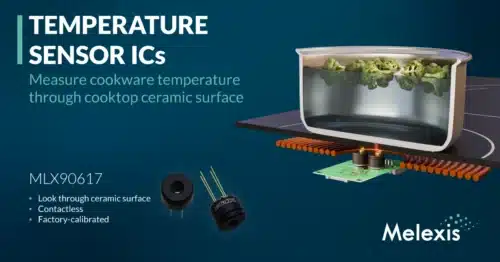The infrared sensor measures cookware temperature through ceramic glass, improving induction hob precision, safety, and automation for better cooking control.

Melexis has launched the MLX90617, an infrared thermometer designed for non-contact temperature measurement in induction hobs. This sensor uses optical filtering to measure the cooking vessel’s base temperature through the ceramic hob, enhancing cooking control, safety, and user experience.
Traditional induction hobs measure the backside temperature of the ceramic glass plate due to existing technology constraints. The MLX90617 introduces an advanced yet cost-effective approach, allowing real-time temperature measurement of the cooking vessel’s base by “looking through” the glass.
Using precise optical filtering tailored to ceramic glass, the sensor detects infrared radiation from the lower part of the cooking vessel while accounting for energy emitted by the glass itself through an advanced algorithm.
The MLX90617 is designed to work alongside other non-contact temperature sensors, such as the MLX90614 or MLX90632, mounted below the ceramic surface. An LED and light sensor can be added to measure the pot’s reflectivity and emissivity for enhanced accuracy.
The sensor captures radiation from the cooking vessel’s base, while the secondary sensor measures emissions from the ceramic glass. The system processes this data in real-time, isolating the vessel’s true temperature while ignoring the glass and sensor emissions.
Integrating the infrared thermometer enables manufacturers to enhance cooking precision and user experience. By directly monitoring the cookware temperature, the hob’s control system gains better insight into food temperature, benefiting recipes that require precise heat control. The sensor also improves safety by detecting abnormal temperature levels and supports advanced automation in cooking systems.
“Our customers’ requests initially sparked the development of the MLX90617. However, the challenges of working with relatively small infrared signals at short wavelengths made us question its feasibility,” admits Joris Roels, Marketing Manager at Melexis. “Through extensive development and application testing, we’ve not only overcome these hurdles but also delivered a cost-effective, user-friendly solution that truly meets our customers’ needs.”
For more information, click here.






